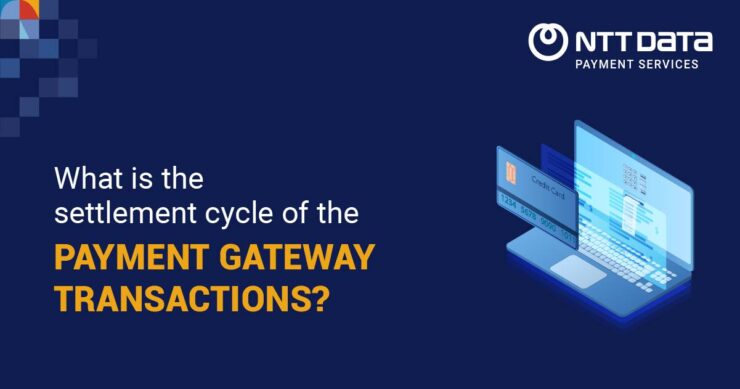
Table of Contents
- 1 Understanding Payment Gateway Transactions And The Settlement Cycle
- 2 What Does The Settlement Cycle Of The Payment Gateway Mean?
- 3 Types Of Settlement Offered By Payment Gateways
- 4 How Does The Settlement Cycle Work In Payment Gateway Transactions?
- 5 Access Seamless Online Payments with NTT DATA Payment Services India
- 6 Conclusion
- 7 FAQs
- 8 4 Different Types of Micro Payments
- 9 How does Virtual Terminals Work?
Understanding Payment Gateway Transactions And The Settlement Cycle
A payment gateway allows merchants to accept online payments from customers for purchases made on their website. When a customer makes a payment on a merchant’s website using their debit/credit card, bank account or other online payment methods, the payment gateway acts as an intermediary to process that transaction.
It sends the payment details to the acquiring bank (the bank facilitating merchant transactions) to process the transaction. Once the transaction is approved, the funds are transferred from the customer’s account to the merchant’s.
What Does The Settlement Cycle Of The Payment Gateway Mean?
The settlement cycle of a payment gateway refers to the time duration after which the merchant receives the funds for the transactions processed through that payment gateway. Different payment gateways have different settlement cycles depending on their processing capabilities and arrangements with acquiring banks.
For example, one payment gateway may have a T+3 settlement cycle, which means the merchant will receive funds three working days after the transaction date.
Types Of Settlement Offered By Payment Gateways
Payment gateways typically offer the following main types of settlement cycles:
➢ Instant settlement – Funds are credited to the merchant account on the same day, within a few hours of the transaction.
➢ Daily settlement – Funds are credited at the end of each banking day, usually within 24 hours.
➢ T+1 settlement – Funds are credited one working day after the transaction date.
➢ T+2/T+3 settlement – Most common. Funds are credited 2-3 working days after the transaction date.
➢ T+n Settlement: Special or customised settlement cycles as per the merchant’s requirements.
How Does The Settlement Cycle Work In Payment Gateway Transactions?
Now, let’s break down the key stages within the settlement cycle process:
1. Transaction Authorisation
When a purchase is made, the payment gateway authorises the transaction amount against the customer’s card or account. This ensures sufficient funds and verifies the payment details.
2. Funds Capture
A few seconds after authorisation, the payment processor captures or withdraws the transaction amount from the customer’s bank or card. The processor now holds these funds.
3. Settlement
The payment gateway determines regular intervals (usually after 24 hours) at which all captured transactions from the previous period are bundled together, and the total amount is deposited into the merchant’s bank account.
4. Reconciliation
The merchant then reconciles the deposited funds against individual transaction records on their payment gateway dashboard to ensure everything matches up correctly.
Access Seamless Online Payments with NTT DATA Payment Services India
NTT DATA Payment Services India offers merchants a reliable and secure payment gateway solution to accept online payments across multiple payment methods. From online payment gateway and POS machines to IVR payments and Bharat QR Scan and Pay, we ensure maximum comfort, convenience, and safety for all your payments.
NTT DATA Payment Services India’s robust fraud prevention and 24/7 support ensure smooth payment processing. Merchants can focus on growing their business while we take care of their payment needs.
Conclusion
Since funds from sales are only available on cycles, businesses need to factor this settlement period into financial planning and accounting. Not being aware of the settlement cycle could potentially lead to cash flow issues if large expenses are paid before transaction funds clear.
It’s a good idea for merchants to have sufficient working capital available to cover business operations and expenses during the settlement cycle period. Setting realistic sales and payment projections based on the typical 1-5 day settlement cycle will help ensure your business has the cash reserves to operate smoothly throughout.
FAQs
1. What is a payment gateway?
A payment gateway allows merchants to accept online payments from customers for purchases made on their website. It acts as an intermediary to process transactions between the customer, the acquiring bank and the merchant.
2. What is a settlement cycle?
The settlement cycle refers to the time duration after which the merchant receives the funds for the transactions processed through the payment gateway. It can range from instant to 3 working days, depending on the gateway.
3. What are the different types of settlement cycles offered?
The main settlement cycles offered are instant, daily, T+0, T+1, T+2, and T+3, as well as T+n, where T refers to the transaction date.
4. How does the settlement cycle process work?
It involves transaction authorisation, funds capture from the customer’s account, settlement where funds are deposited to the merchant and reconciliation.
5. What are the benefits of using a payment gateway?
Payment gateways allow merchants to accept online payments conveniently and securely while ensuring compliance. It also handles payment processing and reconciliation.


